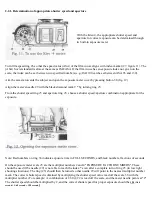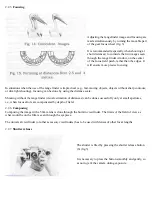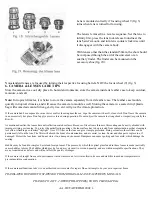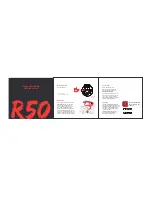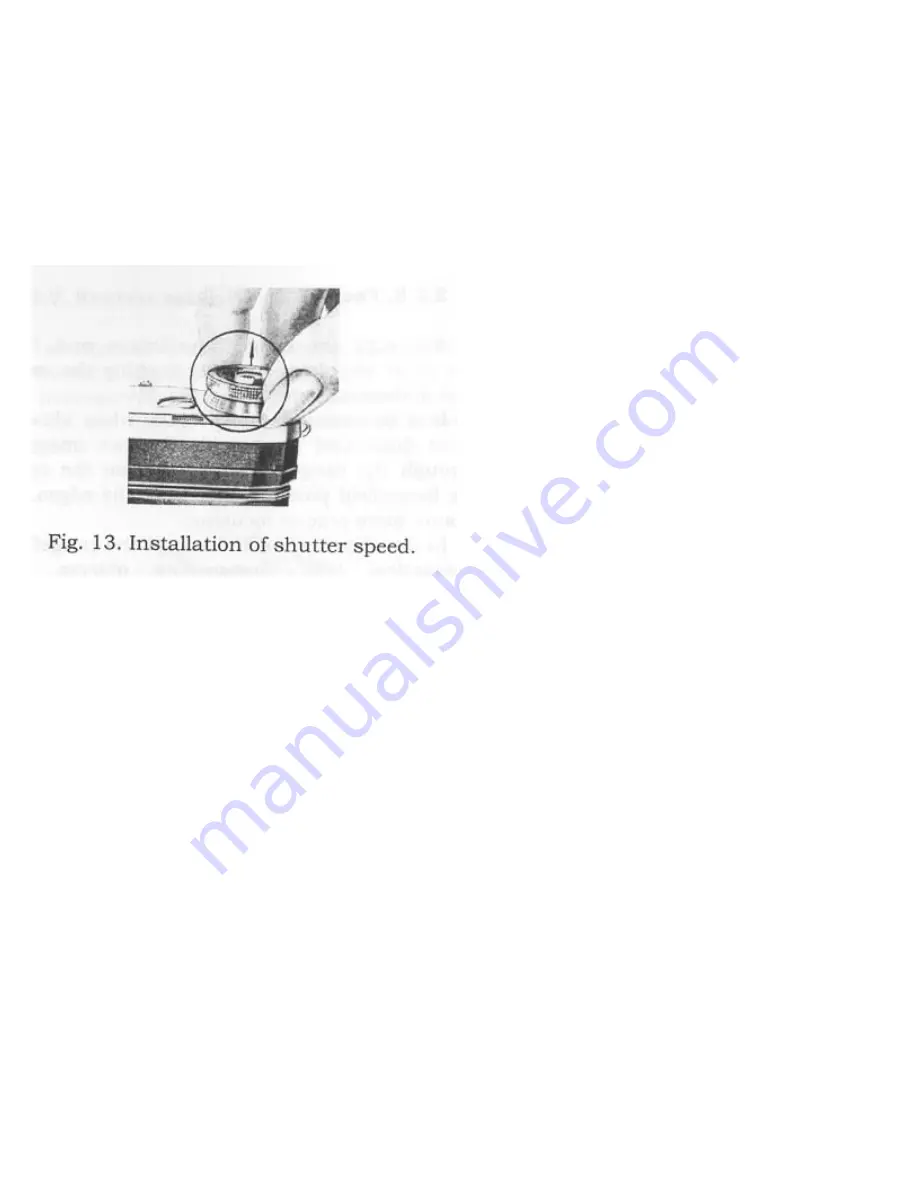
Note: Close the exposure meter cover immediately after metering. The selenium cell can weaken after long exposures
to bright light] Do not subject the meter to shock.
For the meterless Kiev-4a, appropriate exposures can be determined by several methods: The best way is through a
separate exposure meter. Exposure calculators or tables (as found in film boxes) can also be used. Visual judgement
based on one's photographic experience is also useful.
2.2.2. Cocking abutter
Turn the advance knob 5 clockwise (fig. 3)
2.2.3. Selecting shutter speed
Shutter speed selection is done through the knob 6 as
follows:
Raise the knob 6 by the edges (fig. 13), and turn it so that
the black dot on it points to the number of the chosen
shutter speed, and lower the knob back.
The advance knob should be turned clockwise before
changing shutter speeds. In this state, the shutter speed
can be set more correctly. The shutter speed can be set
with the shutter either cocked or fired. However, it is
recommended that the shutter speed be changed with the
shutter cocked.
If an exposure longer than 1/2 second is necessary, the knob's black point should be set against "B". The shutter will
remain open as long as the shutter button is pressed, and will close only upon release. With very long exposures, the
shutter button can be kept down by turning it counter clockwise. Turning back the button (red dot on the shutter and
knob will align) releases it and closes the shutter.
2.2.4.
Setting the aperture
The aperture can be selected by turning ring 19 (fig. 4) and aligning the chosen aperture number against the index
mark. The setting should be done before focusing the lens.








